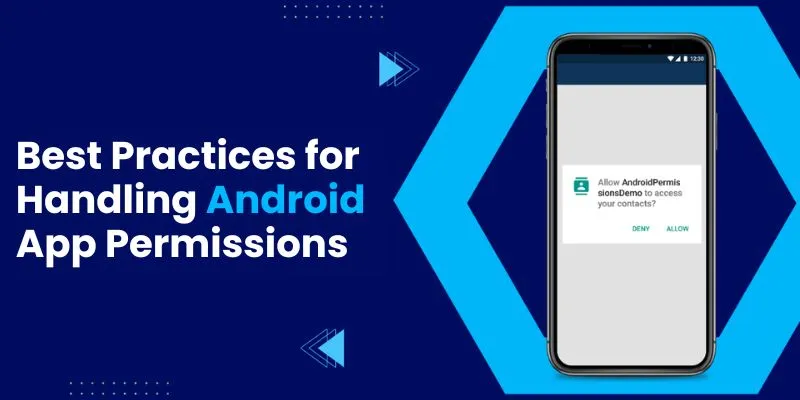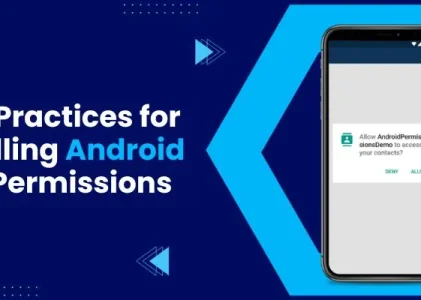Best Practices for Handling Android App Permissions
In mobile application development, user trust and data security are paramount. Android app permissions play a crucial role in maintaining this trust and ensuring the security of user data. Handling permissions appropriately can distinguish between a seamless user experience and one that feels invasive and insecure. This blog will explain into the best practices for managing Android app permissions, helping developers create applications that are both functional and respectful of user privacy. Are you looking to advance your career in Android? Get started today with the Android Training in Chennai from FITA Academy!
Understand the Types of Permissions
Android permissions are divided into two main categories: normal and dangerous.
- Normal permissions: These are automatically granted by the system and do not pose a significant risk to user privacy or device operation. Examples include permissions to access the internet or vibrate the phone.
- Dangerous permissions: These require explicit user approval as they can access sensitive data or affect user privacy. Examples include permissions to access the camera, contacts, or location.
Understanding these categories is the first step in responsibly handling app permissions.
Request Permissions Wisely
Request permissions only when necessary. An app that requests excessive permissions at startup may appear suspicious to users, leading to higher uninstallation rates. Follow these guidelines:
- Ask for permissions in context: Instead of requesting all permissions at once when the app launches, ask for them when they are needed. For example, request camera access only when the user attempts to take a photo.
- Explain why you need them: Provide a clear and concise explanation for why a permission is needed. Android’s shouldShowRequestPermissionRationale method can be used to display a dialog explaining the necessity of the permission before actually requesting it.
Handle Permissions Gracefully
Always consider the possibility that users may deny some permissions. Design your app to handle such scenarios gracefully without crashing or losing functionality.
- Provide alternative functionality: If a permission is denied, try to provide an alternative way to use the app. For example, if location permission is denied, allow users to manually enter their location.
- Respect user choices: If a user denies a permission, do not repeatedly ask for it. Instead, allow them to change their decision in the app settings if they change their mind later.
Test Thoroughly
Testing is important to ensure that your app handles permissions correctly. Test your app in different scenarios, including:
- First-time users: Ensure that permissions are requested in a logical and non-intrusive manner for new users.
- Returning users: Make sure the app behaves appropriately for users who have previously granted or denied permissions.
- Various Android versions: Android’s permission system has evolved over time, so ensure compatibility with different versions of the OS. Learn all the Android techniques and become an Android developer. Enroll in our Android Online Training.
Follow Platform Guidelines
Android provides comprehensive guidelines and best practices for handling permissions. Adhering to these guidelines not only helps in creating a secure and user-friendly app but also ensures compliance with Google Play policies.
- Minimize the use of sensitive permissions: Use the least sensitive permission that still allows your app to function properly. For example, if you only need coarse location data, request ACCESS_COARSE_LOCATION instead of ACCESS_FINE_LOCATION.
- Review permission requirements regularly: Periodically review and update the permissions your app requests to ensure they are still necessary. Remove any permissions that are no longer needed.
Use Permission Libraries
Several third-party libraries can simplify permission handling in Android apps. Libraries like EasyPermissions and PermissionsDispatcher provide a more straightforward way to request and manage permissions, reducing boilerplate code and improving code readability.
Handling Android app permissions responsibly is crucial for building user trust and ensuring the security of user data. By understanding the types of permissions, requesting them wisely, handling them gracefully, testing thoroughly, following platform guidelines, and leveraging permission libraries, developers can create applications that respects user privacy and provide a seamless user experience. Implementing these best practices not only enhances the credibility of your app but also contributes to a healthier, more secure Android ecosystem. Looking for a career as an Android developer? Enroll in this Advanced Training Institute in Chennai and learn about Android techniques and tools from experts.
Read more: Android Interview Questions and Answers
Comments
0 comments

